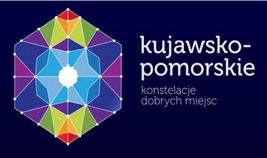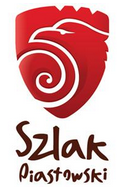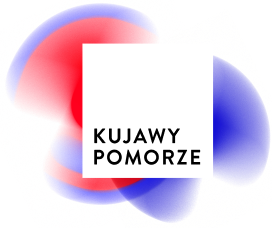Sport
Sport events in our Region
- Enea Bydgoszcz Triathlon
- Run Toruń – Healthy sightseeing
- Copernicus Cup
- The Kujawsko-Pomorskie Region Grand Prix in Long-Distance Running
- European Athletics Indoor Championships Toruń 2021
Medalists & Olympians from our Region
Magdalena Fularczyk-Kozłowska, Natalia Madaj – rowing, gold medalists in double sculls Rio de Janeiro 2016
Iga Baumgart-Witan – athletics, gold 4×400 m mix & silver 4×400 m women medallist, Tokyo 2021
Beata Mikołajczyk – canoeing, silver, 2 x bronze medallist in K-2 500 m (Bejing, London, Rio de Janeiro), former holder of Sport Scholarship of the Region
Sport Scholarships – the booster to great career
Each year over 200 talented athletes receive the Sport Scholarship from the Marshal of Kujawsko-Pomorskie; among them future champions like: Kwiatkowski, Wojciechowski, Baumgart-Witan Mikołajczyk
Athletics
There have been associations and unions gathering the best athletes in Kujawsko-Pomorskie for more than 100 years. Athletic disciplines have been the strength of our region for years, as evidenced by the numerous medals at events of international rank with which alumni of clubs from our region have been honored. We also regularly host outstanding athletes from all over the world in Kujawsko-Pomorskie, who compete at athletics events. Both women and men representing our region in athletic struggles in the world’s largest stadiums are our pride.
Speedway
Speedway developed rapidly in Pomerania and Kuyavia, where the main center of speedway was Bydgoszcz. In Bydgoszcz itself, the first speedway association was formed as early as 1925 and was international in character, as Polish and German citizens belonged to it. In 1929, the construction of a running track at the stadium in Bydgoszcz was completed, and efforts were immediately launched to organize speedway competitions at the facility. In 1930 two more speedway sports centers were established, in Grudziadz in the summer of 1930 and in Torun where the inaugural competition was held on August 28, 1930. And so speedway sport gained more and more enthusiasts and a steadily growing audience. To this day, speedway supporters gather every season in Bydgoszcz, Torun and Grudziądz to support local teams. In 2009, a facility named Motoarena was opened in Torun, which is the world’s largest speedway stadium and regularly hosts international events.
Football
Some kind of curse hangs over football in Kujawsko-Pomorskie
Once upon a time, however, the region’s top three teams – Olimpia Grudziądz, Zawisza Bydgoszcz and Elana Toruń – had aspirations to fight for something more. Olimpia came close to promotion to the PKO BP Ekstraklasa a couple of times. In time, however, it was relegated to the 2nd league.
Zawisza even made it to the top division, won the Polish Cup and played in European Cup qualifiers. Then, however, there was trouble, everything collapsed. The club from the Brda River had to start its adventure with Polish soccer from the lowest levels.
Elana Torun. Here, in turn, dreamed of the 1st league. In recent years, the Torun players have more than once greeted each other with a goose in the garden, but in the end the PKO BP Ekstraklasa backroom turned out to be a forbidden fruit. Then, well – there were financial problems, the club went bankrupt. A trip to higher competition classes was starting all over again.
It all looks as if football in our region was gripped by some kind of fate. The adventures of Elana, Olimpia and Zawisza look like the skirmishes of the heroes of ancient stories with perverse fate. We can only watch with envy clubs in other regions of Poland that participate in European competitions, or cheer on big clubs from abroad like London’s Arsenal FC or other European powerhouses.
Stay active and explore Kujawsko-Pomorskie Kujawsko-Pomorskie Region
Vistula Bicycle Route in the Kujawsko-Pomorskie Region
The idea for the Vistula Bicycle Route, as a national project, emerged in 1995, proposed by Ms. Grażyna Staniszewska, then a member of the Polish Parliament. The route was planned to extend from the town of Wisła to Gdańsk. This initiative aimed to address local authorities’ disregard for cyclists’ needs.
Efforts to delineate the route were undertaken by several regional governments: Śląskie Region (2007), Kujawsko-Pomorskie Region (2014), Małopolska Region (2017), Pomorskie Region (currently), as well as cities such as Kraków and Grudziądz. Within the Kujawsko-Pomorskie Region, the route was mapped and marked on both sides of the Vistula River, covering about 450 kilometers. It serves as a cycling tourism trail, with surfaces of varying types. Six years have passed since the route was marked, though the idea dates back to 2010.
In 2019, as part of the INTERREG EUROPE program within the ECO-CICLE project, we conducted an audit of the Vistula Bicycle Route in the Kujawsko-Pomorskie Region. Specialists cycled the entire route, evaluating it in terms of surface quality and accessibility, signage conditions, cyclist safety concerning motor traffic, and tourist appeal. Local inspections were also conducted to assess alternative routes and modifications. These efforts were preceded by an analysis of proposed route changes submitted by local governments. The audit was validated by independent cycling tourism experts and a team from the provincial government departments, including Sports and Tourism, Strategic Planning and Economic Development, Road Infrastructure, and the Kujawsko-Pomorskie Office of Spatial Planning and Economic Development.
The auditors proposed several unique changes to improve the route’s quality, safety, and appeal. Implementing most of these enhancements requires ambitious investment efforts, which could be realized in the future with funding from European or national resources and collaboration with local governments. The attached material includes a summary of the audit’s findings. Implementing these solutions is essential for creating a competitive cycling tourism product within Poland and Europe.
EuroVelo – International Bicycle Routes in the Kujawsko-Pomorskie Region
We are increasingly spending our free time on bicycles, with sales in 2018 and 2019 reaching around 1.1 million units. Bicycle paths are also expanding. In Kujawsko-Pomorskie Region alone, over 1,000 km of bike paths had been built by 2018, and in the current financial perspective, an additional 268 km are planned under European projects. This infrastructure is primarily built in cities, but also along public roads with significant traffic in rural areas. We expect that new EU programs will provide opportunities to develop tourist cycling routes, which is why we have initiated actions to enhance policies related to cycling tourism.
In the second half of 2019, we commissioned a study to determine the possible routes of international cycling trails in the Kujawsko-Pomorskie Region. This project was supported by the European Union through the Interreg Europe program as part of the ECO-CICLE project— a European network promoting cycle tourism in natural areas, with the Kujawsko-Pomorskie Region Self-Government as one of the partners. Alongside provincial government staff, we invited external cycling tourism specialists to collaborate. The study included an audit of over 700 kilometers of available roads and paths as potential EuroVelo routes. These routes were suggested by local government representatives, collaborating experts, social partners, and independently identified by the audit team. As a result, approximately 360 km of potential routes were identified for EuroVelo trails in the region. While some segments have only one possible route, in most cases, multiple route options were identified, allowing greater flexibility for future EuroVelo development in the region.
The recommended routes for EuroVelo 2 and EuroVelo 9 in the Kujawsko-Pomorskie Region, along with connecting routes (excluding sections overlapping with the Vistula Bicycle Route outside Bydgoszcz), will require marking 206 km of new bike routes and the construction or refurbishment of 67 km of bicycle and local roads. A summary of the proposed route concept is attached. The complete study, however, is more extensive, comprising a 100-page document, graphic files, and data in shp and gpx formats.
This EuroVelo route study serves as a tool to support cycling tourism development policies in the Kujawsko-Pomorskie Region. The goal of the study is to provide public administrators with the information needed to determine the optimal EuroVelo route within the region and to integrate this project into local government planning.
International Bicycle Routes in the Kujawsko-Pomorskie Region – map of routes
Tourism
In the Kujawsko-Pomorskie Region, the development and promotion of tourism is handled by the Department of Tourism at the Marshal’s Office of the Kujawsko-Pomorskie Region and the Kujawsko-Pomorskie Tourist Organization, operating under the act of June 25, 1999, on the Polish Tourist Organization. The Polish Tourist Organization was established to strengthen the promotion of Poland in the field of tourism both domestically and abroad. The minister responsible for tourism oversees the Polish Tourist Organization. Meanwhile, the Regional Tourist Organization supervises the activities of regional and local tourist organizations.
The Department of Tourism and the regional tourist organization work together to achieve:
- Increased recognition of the Kujawsko-Pomorskie tourism brand through:
-
- Shaping the image of the region, considering the support for sustainable development of regional tourism products, tourist routes, and selected forms of tourism,
- Promoting the tourism offer of the Kujawsko-Pomorskie Region.
- Enhancing the significance of tourism sector institutions in the region by:
-
- Strengthening and developing regional and local cooperation among institutional stakeholders,
- Developing a system of research to monitor the tourism sector.
- Shaping the tourism space of the Kujawsko-Pomorskie Region by:
-
- Creating solutions that support active tourism,
- Developing tools that influence the shaping and development of the tourism space.
For over 10 years, the Kujawsko-Pomorskie Tourist Organization has been formed by local governments, local tourist organizations, local action groups, PTTK branches, and other foundations and associations. The Kujawsko-Pomorskie Region is a main member of the Kujawsko-Pomorskie Tourist Organization (referred to as K-POT) and annually contributes a fee for its activities. The local tourist organizations that are part of K-POT include: Bydgoska Local Tourist Organization ByLOT, Golubsko-Dobrzyńska Tourist Organization, LOT KOCIEWIE, Local Tourist Organization “Kujawy,” Local Tourist Organization PAŁUKI, Local Tourist Organization Toruń, and Nadwiślańska Tourist Organization, as well as the Local Tourist Organization “Pojezierze Brodnickie.”

In 2015, the process of building the tourist brand of the region, “Kujawsko-Pomorskie Constellations of Good Places,” began. This concept involves creating a network of connections (constellations) and thereby distributing tourist traffic throughout the entire region. It aligns with the assumptions of the branding strategy for the region, referring to the “charm of small places.” The “Constellations of Good Places” serve as an umbrella brand for locations with different identities, rooted in the mentality of the residents and influencing the specifics of the functioning of individual areas.
“Guide to the Constellations” – a mobile tourist guide for Kujawsko-Pomorskie.
The “Guide to the Constellations” is a modern application aimed at tourists and residents, designed to discover the rich tourist offerings of our region in the spirit of the Constellations of Good Places concept. The application, available for iOS and Android platforms, includes suggestions and descriptions of attractions, cultural routes, as well as cycling paths, an interactive map, current events, and many other features that will undoubtedly enhance the tourism experiences of its users.
The “Guide to the Constellations” application offers:
- An interactive map highlighting the most important and interesting tourist attractions or sites.
- Descriptions of tourist attractions along with their history and curiosities.
- Bicycle routes tailored to various interests and skill levels, which can be traveled via the application or downloaded to specialized applications.
- Treasure hunts as an interactive way to explore locations.
- Information about current cultural and sports events.
- A navigation feature that facilitates reaching the selected destination.
- The ability to plan trips.
We encourage all residents and tourists to download the application and rediscover the beauty of the region. The application is available for free in the Google Play and App Store.

The Piast Trail
The Piast Trail is one of the oldest cultural routes in Poland. It connects key sites and monuments of Polish history associated with the beginnings of the Polish state and the introduction of Christianity to the region. The Piast Trail runs through two regions: Wielkopolskie Region and Kujawsko-Pomorskie Region. It comprises two routes (north-south and east-west) that intersect in Gniezno, the cradle of the Polish state. All sites along the trail are thematically linked to the Piast dynasty era.
The Piast Trail offers attractions year-round for both adults and children, including workshops, reenactments, games and activities in reconstructed medieval settlements, battle reenactments, interactive models, medieval fairs, parades, and guided tours.
On September 4, 2012, the Marshal of the Kujawsko-Pomorskie Region, Piotr Całbecki, and the Marshal of the Wielkopolskie Region, Marek Woźniak, signed a letter of intent to collaborate on leveraging the combined potential of the two regions along the Piast Trail.
This formalized the partnership, which had already been in place for over a year. Previously, the marshals established the Programmatic and Scientific Council for the Piast Trail, which has contributed by proposing enhancements to align the trail with European trends, auditing its tourism potential, and laying the foundation for a cohesive, competitive tourism product. The Council consists of representatives from both regions, operates under the marshals’ patronage, and makes decisions by consensus. In October of that year, the Polish Tourism Organization awarded the Piast Trail the certificate for Poland’s Best Tourism Product of 2012.


